News
View the latest inspiring and positive news and information about what's going on in the PM and IT world.

Date: 18/01/2021
MSP (Managing Successful Programs) is a globally recognized Good Practice Guide for Program Management that is used by organizations to direct change investments.
Axelos recently published the 5th edition of the MSP guide, which had not been updated since 2011.
This new edition responds to a number of changes that have occurred in the world of program and project management since then.
Indeed, a great deal of research has been published over the last few years, showing the high failure rate of programs, whether they are transformation programs or large-scale programs.
The digital revolution, the speed of change, the rise of agile ways of working, and the increased volatility and uncertainty in all markets have led program management to evolve to meet these demands.
This new edition will help current and future program managers, and many other roles, to design, plan, lead and execute their programs and help organizations make their transformation program a real success.
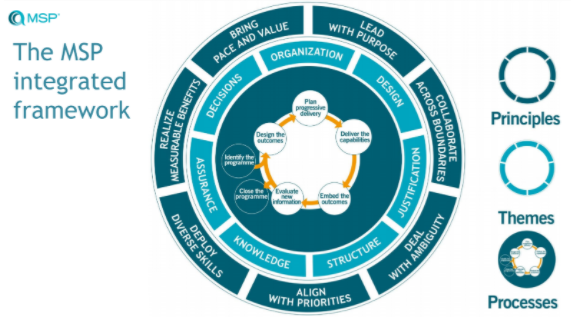 Source: webinar “OVERVIEW MSP 5th EDITION” - Axelos 2020
The overview of the revised key elements is as follows:
Source: webinar “OVERVIEW MSP 5th EDITION” - Axelos 2020
The overview of the revised key elements is as follows:
Read more
MSP 4 vs MSP 5
The essence of what a program remains the same as it was with the 4th edition: it is temporary, it is focused on results and benefits, and it is concerned with leading several projects and other work. The basic concepts (principles, themes, and processes) also still form the overall structure of the guide. However, these have been revised with the following principles in mind:- Ensure that MSP remains adaptable and flexible and can be used in a wide range of organizations and environments. There are many different drivers of change, and the MSP approach to program management must ensure that the organization's investment in change is managed wisely.
- Provide guidance for a wide range of investments that benefit from program management, recognizing that the word "program" has many different meanings for organizations and that terms other than "programs" may be used by these organizations.
- Emphasize the incremental nature of a program and show how MSP allows cyclical progression to the desired future state. Organizations are complex, the external context is emergent, and the delivery of benefits and value creation generally cannot be achieved through a series of linear steps.
- Enable program teams to recognize the many ways in which outputs and changes can be delivered, including iterative (Agile), traditional, and hybrid approaches.
Key Elements of MSP 5
The MSP 5th edition emphasizes greater flexibility, adaptability, and responsiveness by taking an incremental approach to the program lifecycle and enabling organizational agility. The MSP 5th edition consists of a set of principles, themes, and processes that provide a clear roadmap for the program life cycle and ensure successful organizational results. The MSP guide offers 3 lenses:- 7 universal principles
- 7 themes facilitating governance and essential controls
- 7 processes representing the incremental life cycle which, if flexible and adaptable, allows an orderly cyclical progression with clear decision criteria.
 Source: webinar “OVERVIEW MSP 5th EDITION” - Axelos 2020
The overview of the revised key elements is as follows:
Source: webinar “OVERVIEW MSP 5th EDITION” - Axelos 2020
The overview of the revised key elements is as follows:
. Vision
An updated approach to the structure of a vision statement.. Benefits
A reinforced vision of a key principle of SHP throughout the guide.. Risks
A broader discussion of risks and risk mitigation across the program.. Organizational Structure and Roles
Well-established roles within the MSP have been reviewed and updated, and new roles are being introduced and discussed.. Business Case
One of the main challenges is to obtain funding for a program. In the updated basic guide, this topic is discussed and provides a new approach to its development.. Blueprint
A key element of MSP has evolved into the target operating model, and the MSP 5th edition explains its use and benefits in more detail.. Stakeholder Engagement and Communications Planning
Key elements of the new working methods, responding to the main challenges of today's program management.Agile Program Management Integration
The MSP 5th edition offers the multimodal delivery mode, which allows multiple ways of working, depending on what suits you best during delivery. The same program or project can combine different approaches to work, its components, with projects using iterative (agile), traditional or hybrid life cycles, or continuous improvement activities. Leaders need to decide when to invest in addressing change drivers, for example:- adopt disruptions and emerging technologies and trends,
- build new physical infrastructure,
- respond to societal expectations and policy changes,
- establish more effective working partnerships across supply chains,
- using scarce resources as efficiently as possible.
Main Differences between Exams
The MSP 5th edition certification scheme includes only two levels: MSP Foundation and MSP Practitioner. In addition to a completely redesigned program, there are several differences between the MSP 4th and 5th edition exams that will bring new benefits to candidates :- The MSP Foundation exam has been streamlined so that candidates can now focus on learning MSP content, rather than learning to answer complex questions.
- The MSP Practitioner exam has also been simplified to give the candidate more time on the exam to focus on the questions and reduce the reading load.
- Both exams have seen a reduction in the number of questions for each level: the MSP Foundation exam has been reduced from 75 to 60 questions, and the MSP Practitioner exam has been reduced from 80 partial questions to 70 questions. Despite the reduction in complexity and number of questions, the time allocated to write the exams remains at 60 minutes and 150 minutes respectively for MSP Foundation and MSP Practitioner. This is to ensure that candidates have sufficient time to be able to answer each question to the best of their ability.
- Both exams have been refocused based on the cognitive ability (Bloom level) required. The MSP Foundation exam covers all key concepts at the level of knowledge and understanding (Bloom's 1 and 2). There are no new concepts introduced at the MSP Practitioner level; the exam simply assesses the same concepts at a higher cognitive level (Bloom's 3 and 4), where the candidate is asked to apply and analyze the concepts in context.
Benefits of the MSP 5th Edition Method
- It aligns projects and programs with organizational strategy.
- It provides a disciplined approach to profit management that facilitates business changes.
- It ensures an appropriate division of responsibilities and obligations.
- It facilitates organizational agility.
- It helps to understand the risks associated with a program.
- It is a proven best practice in the successful implementation of organizational change through the application of program management.
Would you like to follow an MSP training course?
Our training is once again available in face-to-face and distance learning. QRP is ISO 9001:2015 certified. Contact our team at +41 (0)43 588 10 36 or switzerland@qrpinternational.com to learn more about our virtual classroom, face-to-face, or intra-company offers!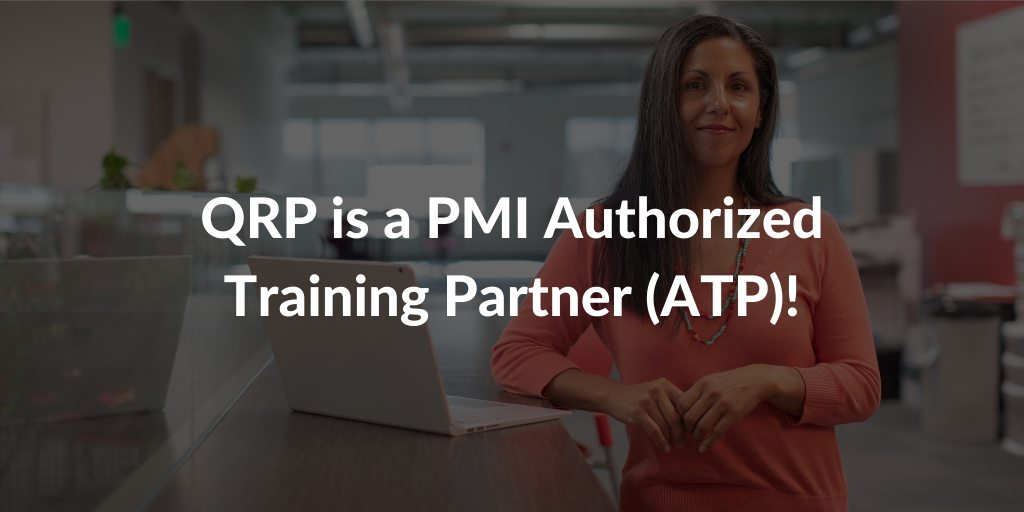
Date: 15/01/2021
Preparing for the PMP® exam is not an easy task.
It requires commitment and dedication, plus you have to choose the right training provider.
The training provider will prepare you for the exam and will enable you to successfully submit your exam application. Indeed, in order to apply for the PMP exam, you should prove you completed 35 hours of project management training.

Read more
Why QRP?
QRP is a PMI Authorized Training Partner (ATP). To maintain this designation, we must continuously meet rigorous standards for quality and effectiveness. As ATP we completed the PMI Train the Trainer – PMP Exam Prep® program and we use PMI-developed training course content. Training with an Authorized Partner will ensure you are trained:- By an organization you can trust,
- With high-quality PMI-developed course content,
- By PMI-approved instructors.
- quality training,
- licensed content for Project Management Professional (PMP)®,
- online learning assets like quizzes, knowledge checks and videos,
- trainers with a badge that shows they are PMI-approved instructors,
- assistance from the trainer for the exam subscription (if applicable).
Still not convinced?
Our PMP courses include the PMBoK (Project Management Body of Knowledge) in its last edition (6th edition, for now, 7th edition as soon as it will be launched) which represents good practice for most projects most of the time. Any PDU claim made against a course delivered by QRP will automatically be accepted by PMI without audit. You can choose between different course formats: we offer classroom, virtual and corporate training. QRP has 20 years’ experience delivering Project Management training across the world. Our trainers are carefully selected from our specialized network. Most trainers are accredited on multiple Best Practices. QRP offers classroom, virtual and corporate training. Visit our PMP exam preparation course page to know all details! For any questions, feel free to contact us directly.
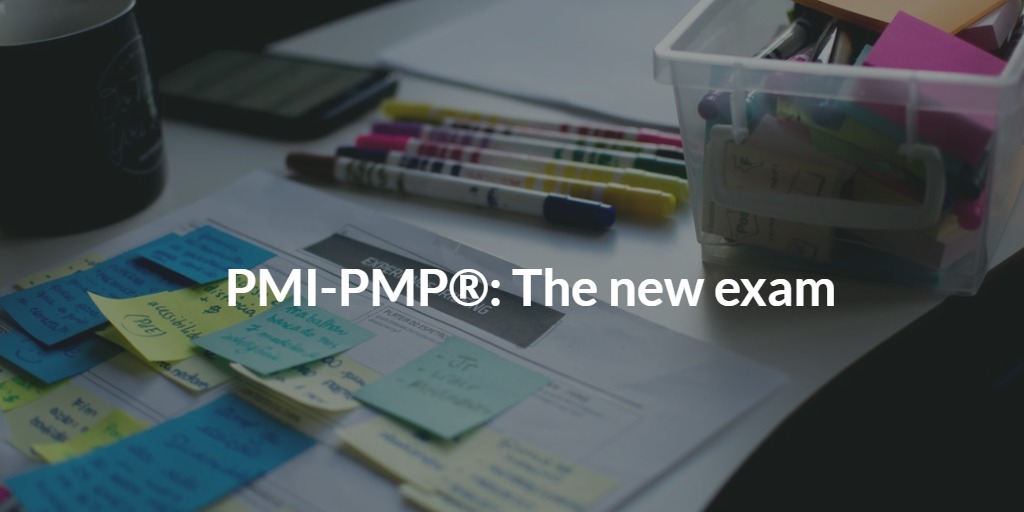
Date: 19/11/2019
There is more than one million PMP certification to date, making it the most widespread certification worldwide.
Together with the release of new PMBoK® editions, the Project Management Institute® (PMI) is used to update also the PMP exam.
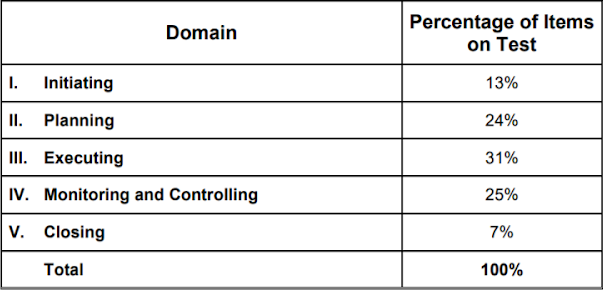 The survey identified market developments and trends.
PMBOK 7th edition and the new review reflect the reality on the ground and take into account the fact that today's project management professionals work in a variety of project environments and use different project approaches.
The new PMP certification will reflect this and integrate approaches across the spectrum of value delivery. Approximately half of the exam represents predictive project management and the other half represents agile or hybrid approaches.
These approaches cut across the three areas listed above and are not isolated to any particular area or task.
The survey identified market developments and trends.
PMBOK 7th edition and the new review reflect the reality on the ground and take into account the fact that today's project management professionals work in a variety of project environments and use different project approaches.
The new PMP certification will reflect this and integrate approaches across the spectrum of value delivery. Approximately half of the exam represents predictive project management and the other half represents agile or hybrid approaches.
These approaches cut across the three areas listed above and are not isolated to any particular area or task.
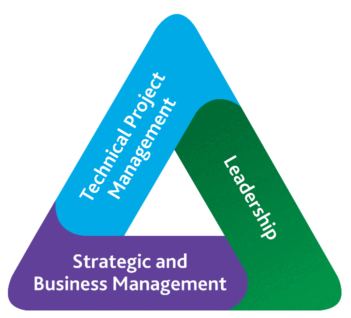 We find:
We find:
 . The people (human) domain
14 tasks - 42% of the questions under consideration.
It covers leadership, conflict management, virtual team management, emotional intelligence, soft skills.
. The process domain (processes)
17 tasks - 50% of the questions under review.
It covers all processes with the 10 PMBOK knowledge areas, the appropriate project management approach, governance, and value.
. The people (human) domain
14 tasks - 42% of the questions under consideration.
It covers leadership, conflict management, virtual team management, emotional intelligence, soft skills.
. The process domain (processes)
17 tasks - 50% of the questions under review.
It covers all processes with the 10 PMBOK knowledge areas, the appropriate project management approach, governance, and value.

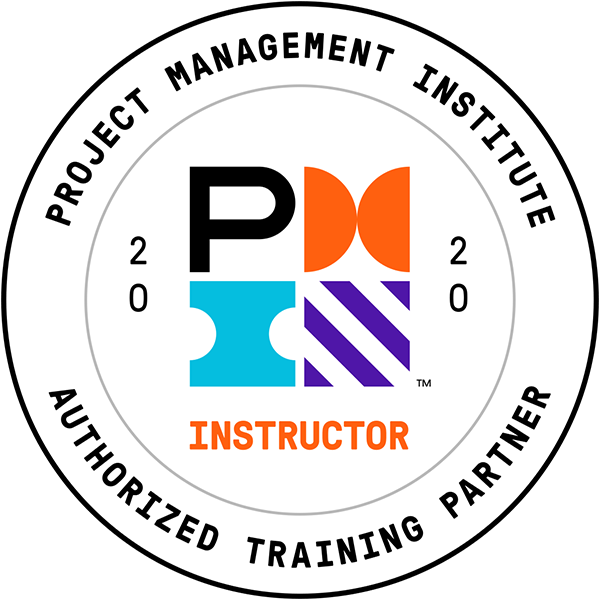 An Authorized Training Provider (ATP) is a training organization accredited by the PMI to provide training in preparation for PMP certification. Attending training with an ATP guarantees you formal training, with official course materials (provided by the PMI) and an accredited and certified instructor with a valid badge.
QRP International is an ATP training organization, check out our PMP training calendar!
An Authorized Training Provider (ATP) is a training organization accredited by the PMI to provide training in preparation for PMP certification. Attending training with an ATP guarantees you formal training, with official course materials (provided by the PMI) and an accredited and certified instructor with a valid badge.
QRP International is an ATP training organization, check out our PMP training calendar!
Read more
When is the new review effective?
The new PMP review is effective from 2 January 2021. As a reminder, it has been possible to take the PMP exam online since April 2020. It will take 3/4 days to find an online exam session. You can therefore find a place in an examination center quickly. The exam is accessible 7 days a week, 24 hours a day.Why such a change?
The PMI is following a certain process to evolve this standard of examination. The new examination is reflected in a document called the "PMP examination content outline". This is the preferred document for preparing for the examination (available in pdf). This change is made to maintain PMI's accreditation. PMI follows two standards, ISO 17024 and ISO 9001, and must comply with certain requirements. Consequently, the PMI has the obligation to conduct a field survey every 4/5 years in order to meet with professionals in the sector and understand what their needs are, what knowledge is required, what skills are needed, what are the daily tasks for a project manager. This survey allows the PMI to carry out a worldwide market study from which the PMI updates its certification so that the examination best reflects the needs on the ground.What's changing in the PMP Exam?
Currently, these outlines of the examination content are valid until 31/12/2020 and reflect 5 areas and 42 tasks. The survey identified market developments and trends.
PMBOK 7th edition and the new review reflect the reality on the ground and take into account the fact that today's project management professionals work in a variety of project environments and use different project approaches.
The new PMP certification will reflect this and integrate approaches across the spectrum of value delivery. Approximately half of the exam represents predictive project management and the other half represents agile or hybrid approaches.
These approaches cut across the three areas listed above and are not isolated to any particular area or task.
The survey identified market developments and trends.
PMBOK 7th edition and the new review reflect the reality on the ground and take into account the fact that today's project management professionals work in a variety of project environments and use different project approaches.
The new PMP certification will reflect this and integrate approaches across the spectrum of value delivery. Approximately half of the exam represents predictive project management and the other half represents agile or hybrid approaches.
These approaches cut across the three areas listed above and are not isolated to any particular area or task.
The 3 new areas
The three new domains are now aligned with the PMI Talent Triangle, presented in the PMBOK 6th edition. We find:
We find:
 . The people (human) domain
14 tasks - 42% of the questions under consideration.
It covers leadership, conflict management, virtual team management, emotional intelligence, soft skills.
. The process domain (processes)
17 tasks - 50% of the questions under review.
It covers all processes with the 10 PMBOK knowledge areas, the appropriate project management approach, governance, and value.
. The people (human) domain
14 tasks - 42% of the questions under consideration.
It covers leadership, conflict management, virtual team management, emotional intelligence, soft skills.
. The process domain (processes)
17 tasks - 50% of the questions under review.
It covers all processes with the 10 PMBOK knowledge areas, the appropriate project management approach, governance, and value.
. The business environment domain (the business environment) 4 tasks - 8% of the questions under review. It covers compliance, profit realization, organizational change, the external environment, and links the organization's strategy to the project.
Here is an example:
Format of the new PMP examination
The new examination includes:- 180 questions (the previous exam was 200) but the same number of questions will be scored
- 230 minutes to complete the exam
- Two 10-minute breaks
- The questions will be a combination of multiple-choice, multiple answer, matching, hotspot, and limited fill.
Prerequisites for the new PMP exam
Before applying for the examination, the participant must ensure that the following pre-requisites are met: If you have a four-year degree or higher :- Have more than 36 months of experience in project management,
- 35 hours of training in project management*.
- A high school diploma
- Have more than 60 months of experience in project management
- 35 hours of training in project management*.
How to prepare for the exam?
Reading
The PMI provides a list of suggested documents and books to help you prepare. QRP simply advises you to read the PMBOK 6th edition (included in the training cost), while waiting for the release of the PMBOK 7th edition, scheduled for 2021, and the Agile Practice Guide.Training Kit (included in the training cost)
The PMI now offers a complete training kit based on the new examination, which can be described as an official kit, called the "PMI CHOICE". It includes an electronic version of a PMP certification preparation course material that can be downloaded in PDF format or viewed and annotated online from various media (PC, iPad/iOS tablets, Android) as well as numerous short videos of 3 to 6 minutes to facilitate learning. Some additional tools are also provided such as the TO-DO LIST, a must for any project manager, various quizzes to self-assess yourself, and a set of 200 questions from the new 2021 exam. Please note: the CAPM® certification exam does not change. The PMI recommends using instructors with an instructor badge. Indeed, to obtain the quality of instructor accredited by the PMI, it is necessary :- To have a valid PMP certification,
- To have significant experience in Agility,
- To have followed a PMI "train the trainer" training course,
- To have passed the instructor's exam (to obtain their badge),
- To be attached to an ATP (Authorized Training Partner) as QRP International.
What is PMI ATP?
 An Authorized Training Provider (ATP) is a training organization accredited by the PMI to provide training in preparation for PMP certification. Attending training with an ATP guarantees you formal training, with official course materials (provided by the PMI) and an accredited and certified instructor with a valid badge.
QRP International is an ATP training organization, check out our PMP training calendar!
An Authorized Training Provider (ATP) is a training organization accredited by the PMI to provide training in preparation for PMP certification. Attending training with an ATP guarantees you formal training, with official course materials (provided by the PMI) and an accredited and certified instructor with a valid badge.
QRP International is an ATP training organization, check out our PMP training calendar!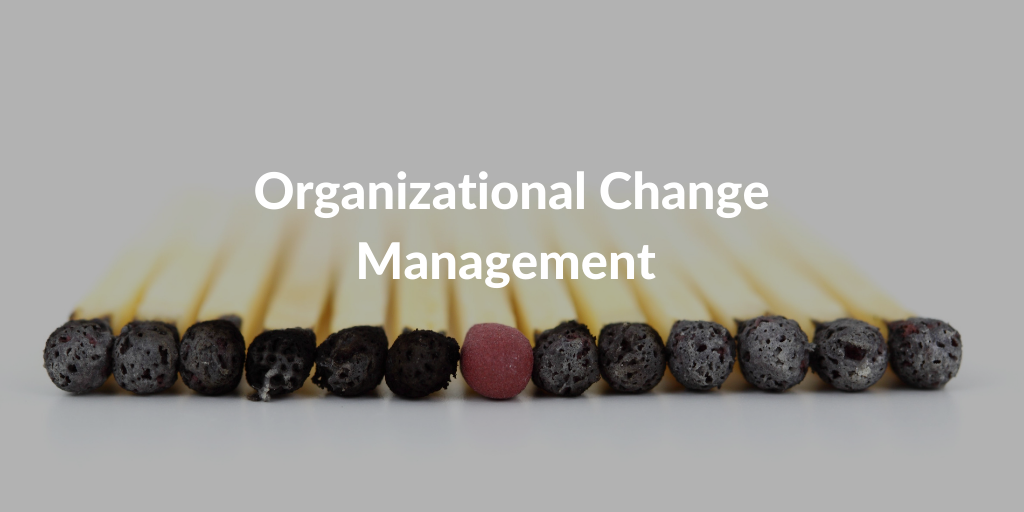
Date: 13/01/2021
Key to ITIL is the Service Value Chain and Value Stream, which exists of six main activities of the value chain. These activities need to be planned and continually improved.
When doing this, specific issues can come to the surface.
How to handle these and how to smooth out the process, is the main focus of the ITIL Strategist Direct, Plan and Improve module.
But what are the principles and methods that can be applied within the theme to support direction and planning?
Read more
Organizational change management
When we talk about Change Management in the IT field, we tend to emphasize the technological aspect, for example, the development of functionality or changes to infrastructure. The more significant the change, the more it has an impact on the daily life of resources. Therefore the “soft” aspect of change must also be managed. Organizational Change Management is linked precisely to changes in the human environment. Organizations need to become aware of these aspects as well: in the past, IT projects have been predominantly seen as technology-only projects. According to the definition of ITIL 4, the practice of Organizational Change Management“ensures that changes are implemented successfully and effectively within an organisation and that long-term benefits are achieved by managing the human aspect of changes.”ITIL 4 identifies the objectives and benefits of Organizational Change Management and what resources to involve in this practice.
Objectives:
- Convince all the resources involved in the change about the positive impact.
- Reduce or remove resistance to change.
- Ensure that change is successfully implemented and supported.
- Facilitate the transition of resources, teams, and the organization to the desired future situation.
Benefits:
- Improvements are implemented smoothly and with lasting benefits.
- Resources understand the goal of the changes and their impact on work.
- Resources believe in the importance and benefits of changes.
Who should be involved in organizational change management?
The resources to be involved do not all have to be in IT teams: you can involve resources from other sectors of the organization, for example, human resources. Often it is in this department that you have the skills necessary to carry out the practice of organizational Change Management. The important thing is to understand which activities are to be outsourced and why they are important, and then find the resources with the right skills. ITIL 4 tip: When undertaking organizational Change Management activities to support an improvement initiative, it is important to consider the resources already present within the organization. There may indeed be a team of resources with the right skills and experience to use. It is therefore important to find time and resources to carry out Change Management activities and to involve the personnel department. Digital transformation is organizational and not just technological. It is not enough to direct software development, but also to direct resources in changing their behavior, guiding communication, and plan activities where the objectives and benefits of the project are explained. Part of organizational change is training all employees not to be afraid to undertake digital change. It is difficult, if not impossible, to improve/grow without Organizational Change Management: it is not just about digital change, but about cultural change within the organization. The ITIL 4 Direct, Plan and Improve module provides the practical skills necessary to create an IT organization in continuous improvement, with a strong and effective strategic direction. ITIL DPI provides a practical method to plan and implement continuous improvement with the necessary agility. Follow this link to see the free registration of our webinar on ITIL 4 Strategist Direct, Plan & Improve ITIL® is a registered trademark of AXELOS Limited, used under the permission of AXELOS Limited. All rights reserved.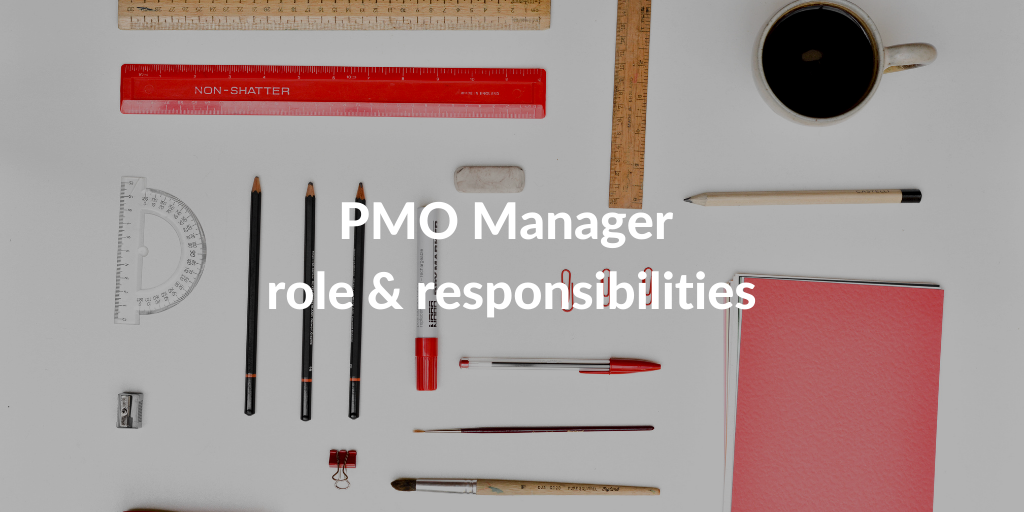
Date: 05/01/2021
Companies looking for closer project tracking are opening PMO departments.
What exactly is this all about?
The PMO, which stands for Project/Programme/Portfolio Management Office, is the body of the organization that is responsible for all ongoing projects and programs. It can be seen as a central repository where organizations have oversight of all change initiatives and are able to co-ordinate them.
PMO ensures that business practices and operations are proceeding in the right way, on time, and on budget.
This is critical as organizations deliver value through projects and programs.
According to PMI's Pulse of the Profession report, companies that align their corporate PMO with business strategy not only have 38% more projects that meet goals than those that don't, but also 33% fewer projects that are considered failures.
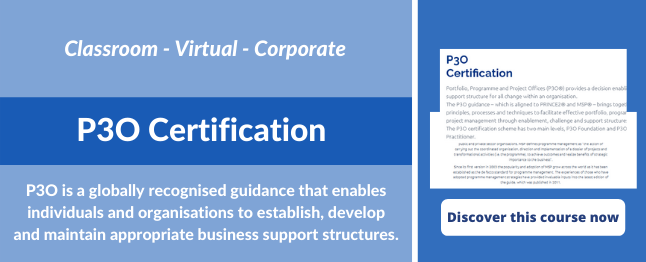
Read more
Why a PMO Manager?
The Project/Program Management Office is one of the fastest-growing areas of focus for competitive companies and is now fundamental to optimised project management. To keep up with market expectations, competition, and the economic conditions created by the current global competitive environment, companies must be able to do more with fewer resources. The introduction of Project Portfolio Management and PMO systems shows how to turn project management into a value-generating machine. The probably best-known description of the functions of a PMO generally includes only those functions aimed at providing support for individual projects. However, if these functions are complemented by others that support top management in defining organisational policies and action plans to link business strategies with operational planning, the PMO can play a driving role in achieving the company's business objectives and generating profits and competitive advantages. In this sense, the functions and skills to be developed relate to the following areas:- Operational and methodological support.
- Management of delivery infrastructure.
- Management of resource integration.
- Technical support management.
- Alignment with business objectives.
The responsibilities of the PMO Manager
PMO managers perform a wide range of tasks, in order to successfully oversee all aspects of the project development process. If the organization does not have an existing PMO yet but is planning to install one, the PMO Manager will be the one to build and design the PMO. The PMO Manager is also the one to appoint and/or recruit PMO resources based on the chosen PMO model. Once the PMO is installed, daily essential responsibilities are:- Follow all ongoing projects and programs,
- Responsible for all PMO personnel,
- Overseeing project development,
- Facilitate project planning,
- Facilitate the governance process,
- Facilitate the change control process,
- Performing financial analysis,
- Providing financial reports and budget outlines,
- Modify processes and organize workstreams,
- Ensure that documentation is correct and up to date,
- Ensure team members uphold the organization’s standards,
- Collaborating with other department leaders,
- Project and program documentation,
- Mentor project managers.
The necessary skills for being/becoming a PMO Manager
The PMO Manager is responsible for a very key part of the organization as the PMO guides all ongoing projects and programs. Therefore, the PMO Manager has to be able to have a clear overview and comprehensive vision in line with the organization’s vision. At the same time, the PMO manager must be able to focus on details and technicalities and have great interpersonal skills as he/she will work closely with professionals at many different levels. Often a PMO manager has at least the following set of core skills:- Problem-solving and pragmatic,
- High level of organizational skills,
- Great leadership,
- Critical thinking and attention to detail,
- Ability to perform under pressure,
- Excellent verbal and written communication skills,
- Exceptional stakeholder skills,
- Financial knowledge and commercial outlook,
- Wide knowledge of project and change management,
- Extensive knowledge of the use of different tools.
How to become a PMO Manager?
In addition to the knowledge acquired during their studies, a PMO Manager must also possess a number of technical skills that can be acquired through a targeted training course. For example, Axelos P3O course provides a decision enabling/delivery support structure for all change within an organisation. The P3O guidance brings together a set of principles, processes and techniques to facilitate effective portfolio, programme and project management through enablement, challenge and support structures. Become now a PMO Manager booking your seat for the next P3O course!

Date: 22/12/2020
Jeroen Franssen – Senior Expert Talent, Labour Market & Labour Organisation – talks in a series of podcasts ‘Be the change’ about the future of work with different guests about their visions and expectations.
The first episode describes how the division of labour can be different and based on projects and roles instead of limited and predetermined positions. This is a vision that is shared amongst professionals and based on the ever-growing need for flexibility and digitalization.
These two factors are currently the two drivers of change in the workforce.
According to the principle of work organization via projects and roles, a career consists of a succession of project assignments. A professional can realize these project assignments at different employers. There will always be a need for certainty so it is highly unlikely that we will completely lose predetermined roles and contracts.
However, work organized via projects and roles fits with the ongoing changes and demands from companies.
It also provides professionals with the opportunity to discover new things and find a sense of belonging instead of just serving society in a limited occupation.
Work organization via projects and roles is a perfect fit for our rapidly evolving world, in which new business models, technology and global unified markets are demanding flexibility and in which digitization influences everything.
Read more







